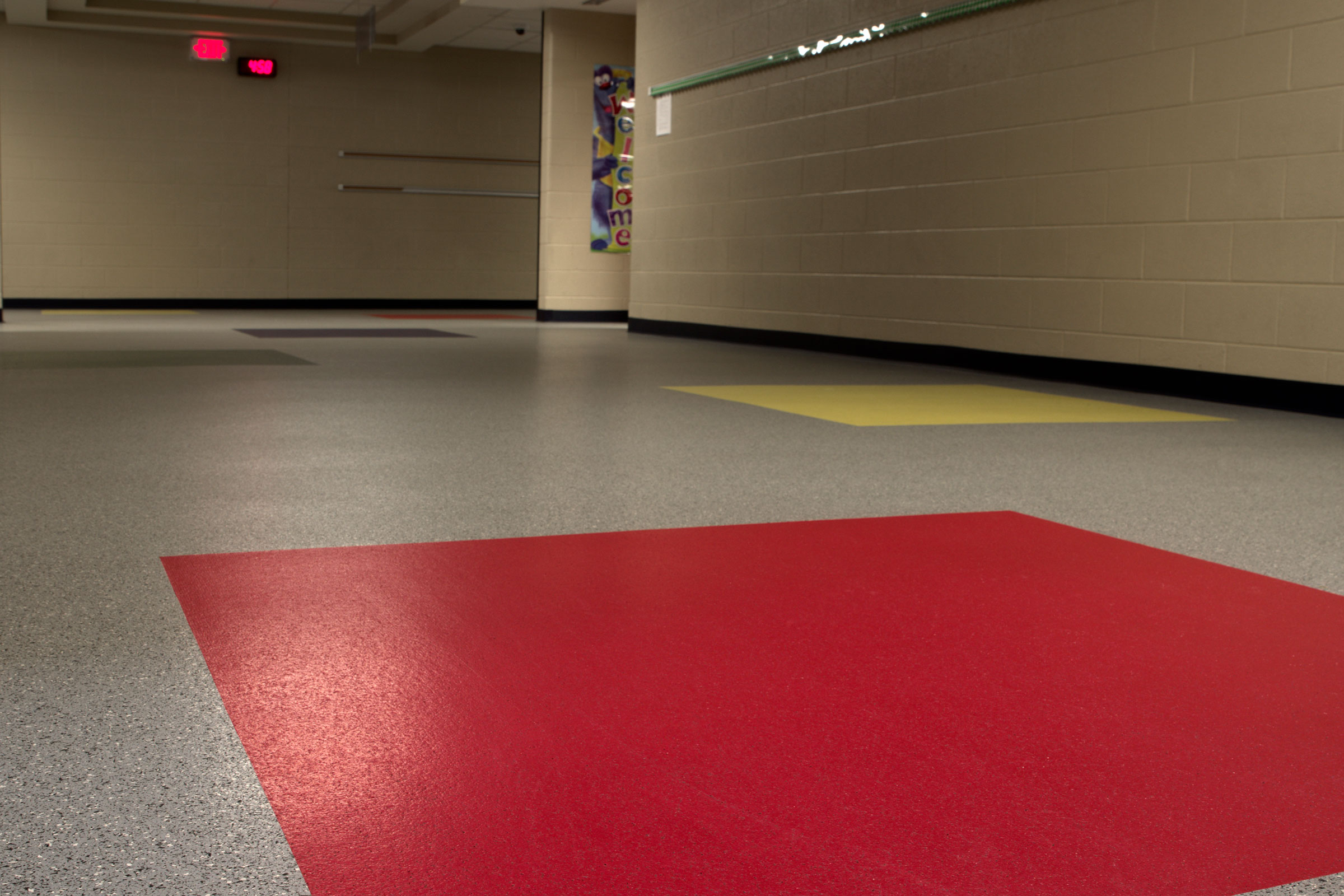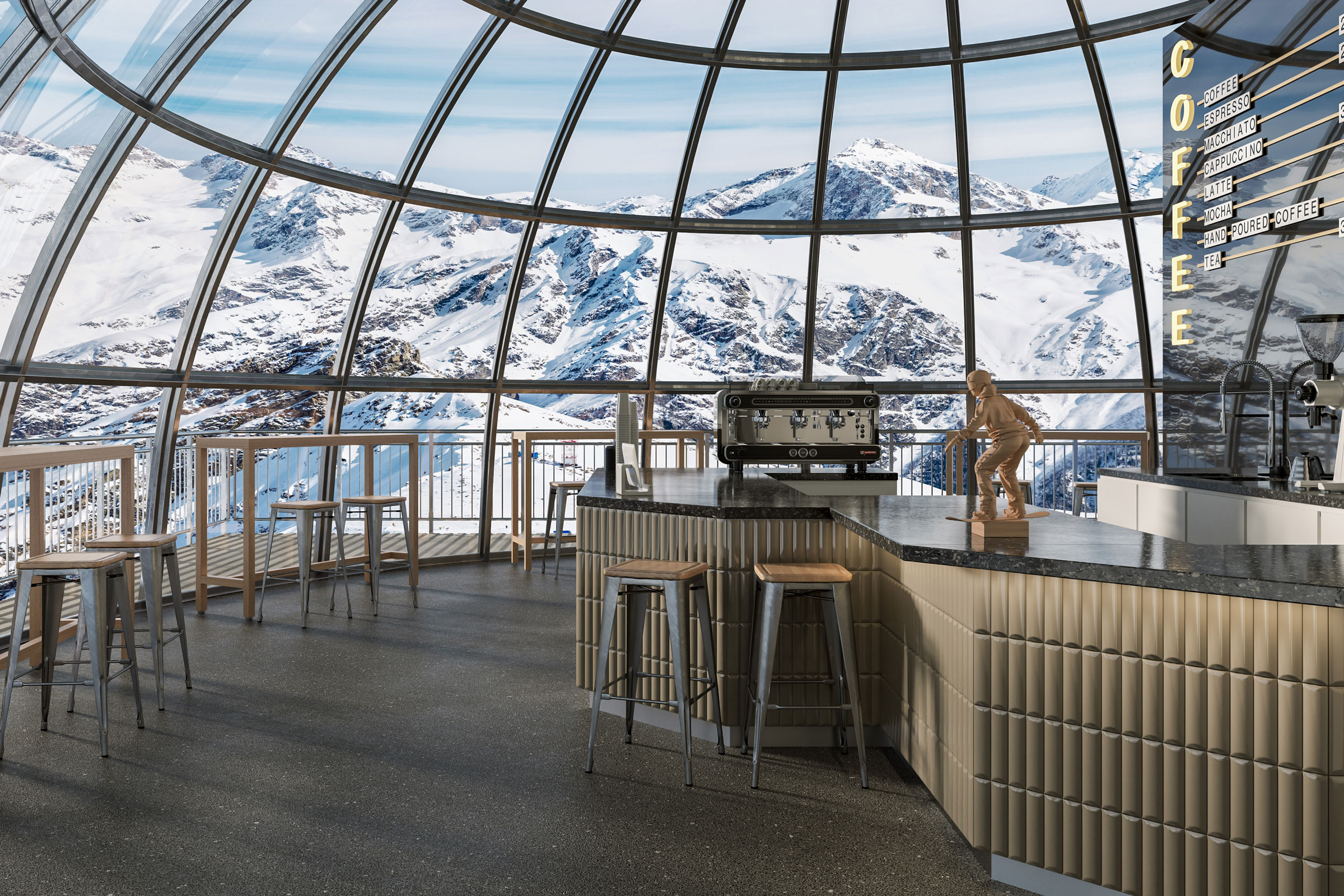Story at a glance:
- Properly sourced and manufactured recycled rubber flooring passes strict indoor air quality standards.
- Recycled rubber flooring is primarily composed of post-consumer recycled tire rubber.
- Rubber flooring has an anti-fatigue surface that’s perfect for places with extended periods of standing or a lot of walking.
Recycled rubber has been used successfully in flooring for more than 65 years, but several misperceptions persist among architects, facility managers, and other design specifiers.
As the globally leading producer of recycled rubber for applications ranging from sports and acoustical solutions to rubber flooring, REGUPOL has a comprehensive technical understanding of this material. And we are all too familiar with the myths associated with it. As a result, we have made it our mission to set the record straight.
Here are the top five misperceptions we encounter in the field.
MYTH #1: Doesn’t rubber flooring smell bad?

Rubber flooring is used throughout this Joe Fresh store. Photo courtesy of REGUPOL
We get this question all the time because people often mistake new-flooring scent with off-gassing of volatile organic compounds (VOCs) and become concerned. Or they remember that strong new-tire smell at the local garage and wonder if the floor will smell the same.
Recycled rubber flooring, properly sourced and manufactured, passes strict indoor air quality standards. Additionally, this flooring off-gasses far less VOCs than commonly accepted building materials like carpeting or plywood. In fact, the product can even help a building earn LEED points for Low Emitting Materials.
Just like that new car smell, the scent of a newly installed recycled rubber floor will dissipate quickly indoors with a working HVAC system.
MYTH #2: Isn’t rubber flooring an environmental problem?

Rubber flooring inside Joe Fresh. Photo courtesy of REGUPOL
Each year more than 9 million tires (approximately 90,000 tons) are reclaimed from landfills to make environmentally sound solutions for the sports, acoustics, commercial, construction, and transportation markets. Not all products are created equally, even within the same category. But on the whole, rubber flooring is an excellent example of a recycling solution.
Recycled rubber flooring is primarily composed of post-consumer recycled tire rubber (SBR, styrene-butadiene rubber) from US-sourced tread buffings, inner tubes, and whole tire crumb. Our process shreds, cleans, and removes contaminants like dirt and metal, and then mills it into crumb. Vibrant-colored marbleized chips made of Ethylene Propylene Diene Monomer (EPDM) are added. Finally, we blend in a low-VOC, environmentally friendly waterborne urethane binding agent to produce a smooth, sleek, resilient flooring material. No heat is used or added to the manufacturing process, and minimal water is used. Because of this environmentally responsible manufacturing process, this product can help a building earn multiple LEED credits.
MYTH #3: Isn’t rubber flooring only for running tracks and weight rooms?

Photo courtesy of REGUPOL
There are very few places where rubber flooring can’t be applied, and it is often specified for environments like commercial kitchens, waiting rooms, and even medical labs. College students relax on recycled rubber library floors. Pool areas, nursing stations, stairways, office building entrances and hallways, and physical therapy facilities are all experiencing the benefits of this material. Its anti-fatigue surface is also perfect for places where workers stand for extended periods or do a lot of walking.
Many installations specify rubber flooring to specifically take advantage of its noise and vibration-controlling benefits. Noise within a building will either be absorbed, reflected, or transmitted by flooring. Hard surfaces are especially reflective. There are four main components to noise control—absorption, damping, decoupling, and adding mass. Rubber flooring is unique in that it provides all four. REGUPOL flooring can even help a building earn LEED credits for acoustic performance.
As with any material, recycled flooring has some limitations. There are a few areas for which it is generally not recommended, including emergency rooms, cleanrooms, and auto mechanic areas. And just as direct UV light will uniformly fade all flooring materials over time, rubber flooring is no exception.
MYTH #4: Isn’t rubber flooring expensive to maintain? Doesn’t it wear out quickly?

Photo courtesy of REGUPOL
Rubber flooring can incorporate vibrant colors and designs, so it is only natural for someone to ask if those bright reds or blues can be maintained easily.
Since the color is homogenous through the whole material’s thickness, colors and patterns remains consistent throughout. And it requires relatively low maintenance. Sweeping, vacuuming, mopping, and auto-scrubbers are all appropriate for the material.
Hypothetically speaking, REGUPOL products are a 60,000-mile floor. Remember, we are using recycled tires that were originally designed to handle the harshest of wear and environments. Installing this same material in more controlled and much tamer environments would lead one to conclude that unless there is a defect in the manufacturing or maintenance needs are ignored, this product should greatly exceed all flooring expectations. That means less money spent in replacement down the road, and a longevity that keeps flooring material out of landfills longer.
MYTH #5: Is rubber flooring slippery?

Rubber flooring inside Joe Fresh. Photo courtesy of REGUPOL
These floors are made from the same material trusted to grip the road going 60 miles per hour on a rainy highway. It can definitely offer a slip-resistant jog as well. Rubber flooring offers one of the highest levels of slip-resistance in the industry. And if someone does fall, they will have more cushion and likely less injury than if the incident were to occur on tile, wood, or concrete.


